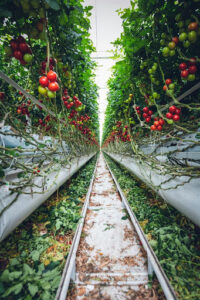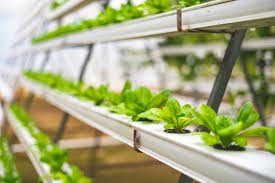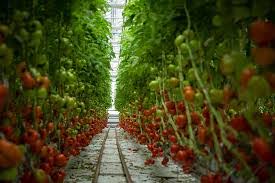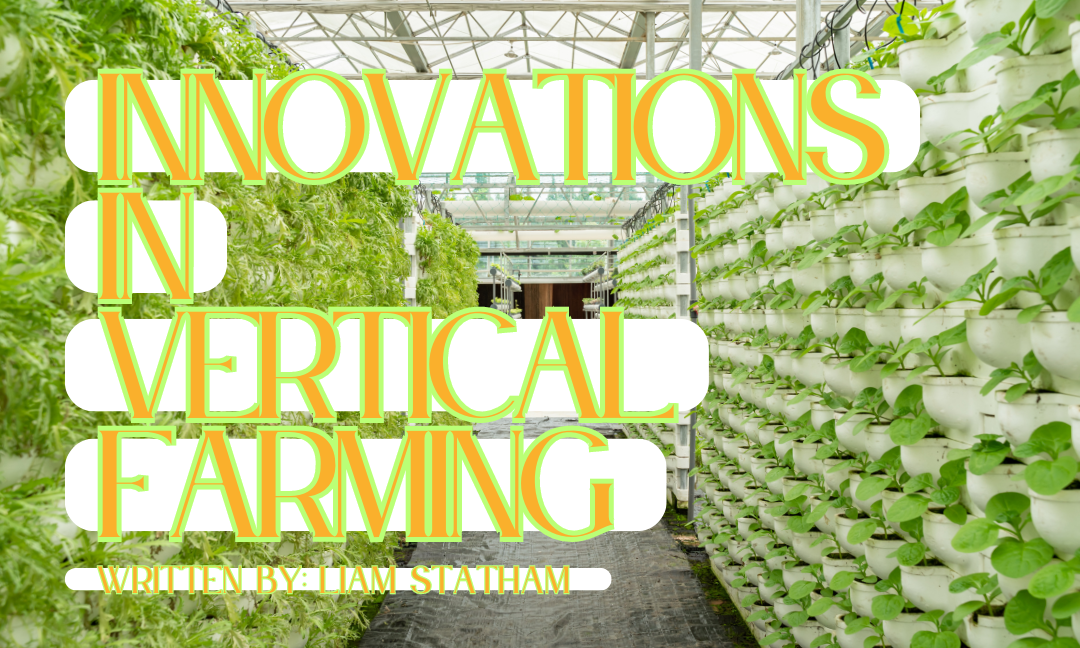Written by: Liam Statham
Edited by: Dhanika Botejue
Designed by: Tvisha Lakhani
Published by: Rayna Almas
In March 2023, Canada’s first-ever hands-free vertical farming system was opened in British Columbia. A few months later, another vertical farm was set up in an old cereal factory in Ontario. These state-of-the-art facilities use touchless technology in all stages of crop production and aim to maximize space efficiency and crop yields while minimizing water usage. In this article, I will explore the history of vertical farming, how it has improved, and how it will continue to grow in the future.
 The Beginning of Vertical Farming
The Beginning of Vertical Farming
The term “vertical farming” was first coined by Gilbert Ellis Bailey in 1915, who was looking for ways to maximize the efficiency of farms. However, his idea of vertical was not building farms up into the sky, but using explosives so that we could farm deeper underground.
The first true “vertical farm” was envisioned by Professor Dickson Despommier in 1991. He was trying to figure out a way to bring food production closer to urban centers, and, with the help of his environmental science classes, came up with the idea of turning an entire high-rise building in Manhattan into a vertical farming center. Because of this, Mr. Despommier is known as the “founder of modern vertical farming.” Ever since the creation of this idea, vertical farms have been slowly popping up around the globe.
How Vertical Farming Has Improved
In 2011, the most successful modern vertical farm until that point was created: AeroFarms. AeroFarms utilized climate and lighting control, as well as aeroponics, to create a farm that was 400 times more efficient per square foot than a traditional farm. Aeroponics delivers nutrients to plants in the form of a fine mist that is sprayed across the plants.
 Another popular system in vertical farms is hydroponics. Hydroponics is the technique of growing plants using a water-based solution instead of soil. These water-based solutions contain all the nutrients needed for a plant to thrive.
Another popular system in vertical farms is hydroponics. Hydroponics is the technique of growing plants using a water-based solution instead of soil. These water-based solutions contain all the nutrients needed for a plant to thrive.
Since the creation of AeroFarms, the main improvement in vertical farming has been the use of Artificial Intelligence (AI). AI enables precision agriculture, a technology that uses GPS. Precision agriculture can monitor and meet every single individual plant’s needs. AI also makes it very easy to adjust temperature, lighting, and CO2 levels.
Modern vertical farms can combine aeroponics, hydroponics, and AI. Together, these technologies create a perfect environment for plants to grow year-round.
The Future of Vertical Farming
 AI will likely continue to be used increasingly in vertical farms to improve efficiency. Hydroponic and aeroponic systems are also constantly being worked on and improved, which will also increase the production of vertical farms.
AI will likely continue to be used increasingly in vertical farms to improve efficiency. Hydroponic and aeroponic systems are also constantly being worked on and improved, which will also increase the production of vertical farms.
Vertical farming has a bright future, especially in Canada. Projects like Skyfarm, a vertical farm in Toronto, are constantly being opened up. The Canadian government is also supporting vertical farming, by pledging $1 billion to the Sustainable Canadian Agriculture Partnership. Significant parts of these funds will go towards improving AI in farming. The vertical farming market in Canada “is expected to grow 20.93% by 2027.”
Resources
https://vertical.mt/vertical-farming-technology-game-changers-iot-ai-robotics/
https://www.nal.usda.gov/farms-and-agricultural-production-systems/hydroponics
https://structuralpanels.ca/13-vertical-farming-innovations-that-could-revolutionize-agriculture/
https://skygreenscanada.com/blog/f/historical-roots-of-vertical-farming-babylon-to-sky-greens
Photo by Markus Spiske on Unsplash

